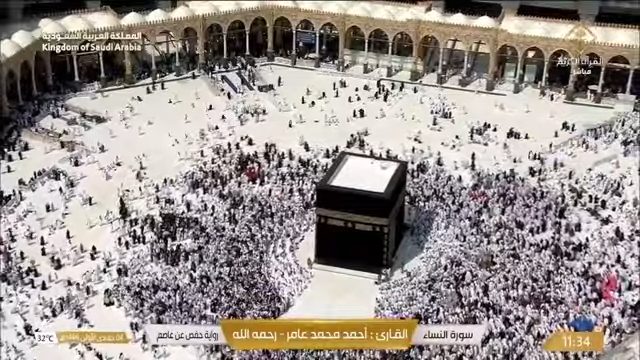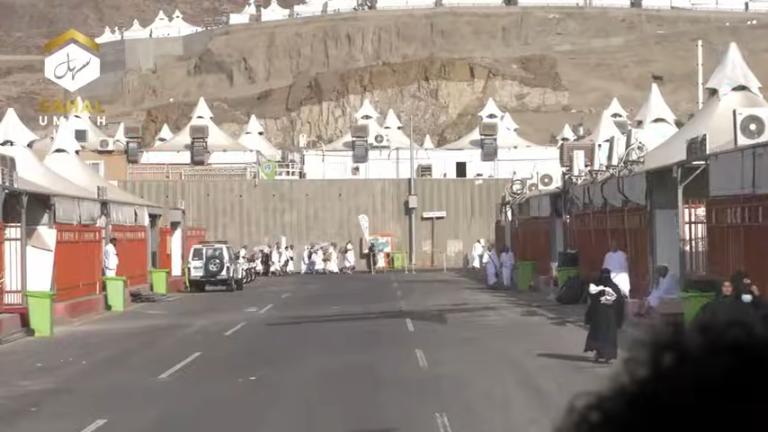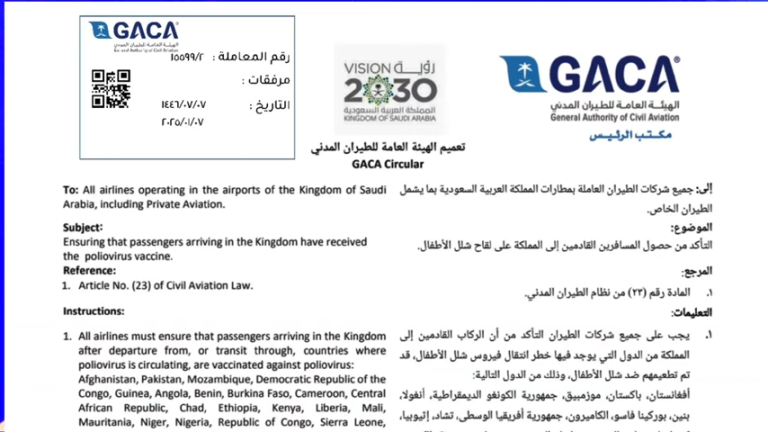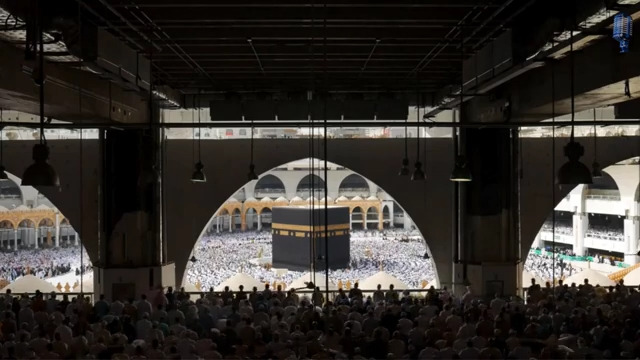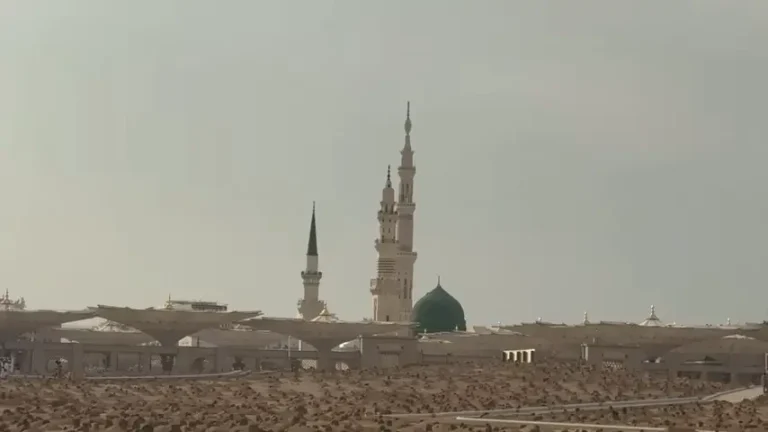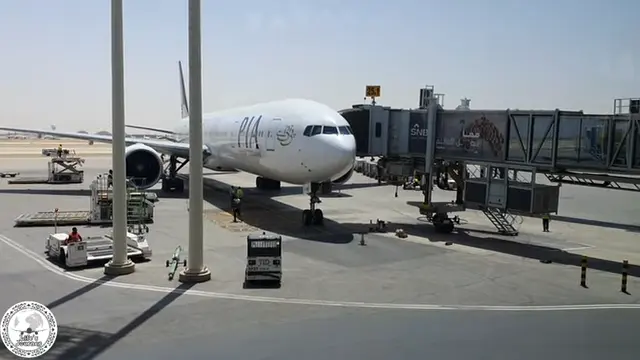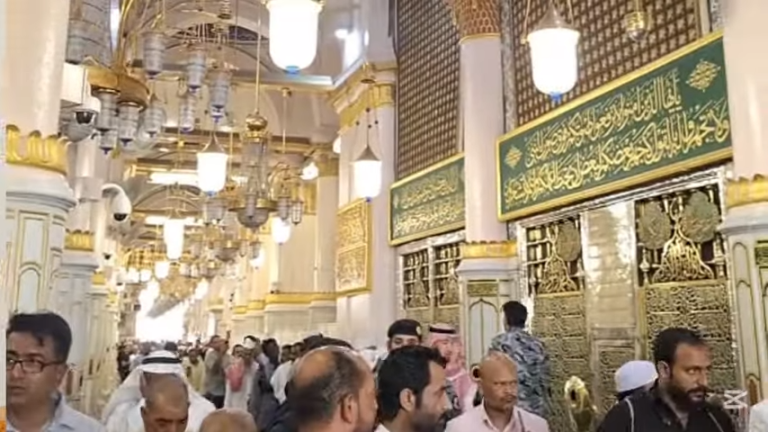Embarking on Your Hajj 2025 Journey
Essential Precautions (8th dhul hijjah to 12th dhul hijjah)
The Hajj pilgrimage is a journey of a lifetime, and being well-prepared is crucial for a smooth and spiritually fulfilling experience. This guide covers the essential precautions Hajj pilgrims should take from the 8th to the 12th of Zulhijjah. We’ll look at what to be mindful of at Hajj Steps day by day.
Questions to Consider:
- Why is it important to be aware of precautionary measures during Hajj?
Being aware of precautionary measures during Hajj is crucial for several significant reasons, primarily revolving around the health, safety, and overall well-being of the millions of pilgrims who gather in one place.
Here’s a breakdown of why it’s so important:
- Mass Gathering Risks: Hajj is one of the largest annual gatherings in the world, bringing together millions of people from diverse backgrounds and regions. This sheer density of people creates unique challenges:
- Disease Transmission: Close contact in crowded areas significantly increases the risk of infectious diseases spreading rapidly. Common illnesses during Hajj include respiratory tract infections (like colds, flu, and pneumonia), diarrheal diseases (food poisoning), and even more serious conditions like meningococcal disease. Precautionary measures like vaccinations, hand hygiene, and wearing masks help mitigate this.
- Heat Stress and Dehydration: The Hajj often coincides with hot weather in Saudi Arabia. Prolonged exposure to sun and strenuous physical activity can lead to heat exhaustion, heatstroke, and severe dehydration, especially for older pilgrims or those with pre-existing conditions. Drinking plenty of fluids, seeking shade, and using umbrellas are vital.
- Crowd-Related Injuries: Stampedes, crushes, and falls are serious risks in densely packed areas, particularly during rituals like the stoning of the Jamarat. Adhering to designated routes, avoiding pushing, and moving calmly are crucial for preventing such incidents.
- Accidents: Road accidents, especially when travelling between sites, and fire incidents (due to overloaded electrical sockets or improper cooking) are also potential dangers.
- Individual Health Conditions: Many pilgrims are elderly or have chronic health conditions (e.g., diabetes, heart disease, asthma). Precautionary measures are essential to manage these conditions and prevent exacerbations:
- Medication Management: Pilgrims need to carry sufficient amounts of their regular medications and ensure they are stored properly.
- Fatigue Management: The Hajj involves significant physical exertion. Proper rest, hydration, and not over-exerting oneself are important to avoid fatigue-related issues.
- Foot Care: Extensive walking can lead to blisters and foot problems, especially for diabetics. Wearing comfortable footwear and maintaining good foot hygiene are crucial.
- Logistical Challenges: The sheer scale of Hajj also presents logistical challenges that can impact pilgrim safety:
- Waste Management and Hygiene: Maintaining cleanliness and proper waste disposal is critical to prevent the spread of diseases.
- Food and Water Safety: Consuming safe and hygienic food and water is paramount to avoid gastrointestinal infections.
- Emergency Response: While authorities have robust emergency services, individuals being aware of basic first aid and knowing who to contact in an emergency can make a significant difference.
- Maximizing the Spiritual Experience: Ultimately, taking precautionary measures allows pilgrims to focus on the spiritual aspects of Hajj without being unduly burdened by health or safety concerns. A healthy and safe pilgrim is better able to complete the rituals and derive the maximum spiritual benefit from their journey.
The Saudi Arabian government and various health organizations provide extensive guidelines and recommendations for pilgrims to ensure their safety and well-being during Hajj. Being aware of and adhering to these precautions is a responsibility of every pilgrim.
Day 1 (8th Dhul hijjah): From Your Accommodation to the Mina Tents
The 8th Dhul hijjah marks a significant movement for pilgrims. From your accommodation building, you’ll need to don your Ihram. It’s from this point that your journey towards Mina begins. Your building management will inform you when to gather your essential belongings and proceed downstairs for transport.
Buses will typically arrive in batches; an initial set (perhaps 2-4 buses) will take the first group of pilgrims to Mina, drop them off, and then return for the subsequent groups.
Questions to Consider:
- When and where should I put on my Ihram on the 8th of Zulhijjah?
- How will I get from my hotel to Mina?
- What is the bus boarding process like?
Navigating the Makkah Bus to Mina: Key Things to Remember
The bus journey itself requires some important considerations. A crucial point to understand is that these buses are often sealed once pilgrims are aboard. This means no one can enter from outside, and importantly, no one inside can disembark until the destination. Therefore, it’s vital to use the washroom and manage your water intake before boarding.
Be prepared for potential delays, as buses can sometimes be held up in traffic for 2-3 hours. During such times, accessing a washroom, especially for children, will not be possible and can cause significant discomfort. As the initial buses will drop off the first group and return for others, there might be a waiting period.
To minimize your wait and ensure a smoother process, try to be ready and downstairs before your scheduled departure time.
Questions to Consider:
- What is a critical point to remember about the buses to Mina regarding entry and exit?
- What should I do before boarding the bus to Mina regarding personal needs?
- Why might there be delays in departing for Mina, and how can I prepare?
Settling into Mina Camps : Your First Steps in the Tent City
Upon reaching Mina, you’ll be transported by bus directly to your designated camps, so you don’t need to worry about navigating there on your own. This year, the camps are equipped with sofa-cum-beds and high-quality mattresses, alongside excellent facilities.
As soon as you arrive at your camp, your immediate priority should be to find a good mattress or spot and place your belongings to claim it. You can then set up your sofa-cum-bed as needed (either folded as a sofa or opened as a bed) and take some rest.
Questions to Consider:
- How will I find my specific camp in Mina?
- What kind of sleeping arrangements and facilities can I expect in the Mina camps?
- What’s the first thing I should do when I arrive at my camp?
Making Mina Your Temporary Home: Securing Your Space & Getting Your Bearings
After a brief rest in your Mina camp, make sure to secure your spot by informing those around you that it’s occupied. This helps prevent any misunderstandings. A very important step is to then go outside and take photographs of:
- The pole number that identifies your camp.
- The gate of your camp.
Also, ensure you know your Maktab (office/service provider) number.
Once this is done, take some time to walk around your camp’s vicinity. Familiarize yourself with nearby camps, the closest train station, the main roads, and crucially, the routes to the Jamarat (stoning pillars) and back to your camp. The 8th of Zulhijjah effectively serves as a “spare day” for this orientation, as pilgrims typically arrive at night and will perform Zohar, Asar, Maghrib, Isha, and the following day’s Fajr prayers in Mina.
Questions to Consider:
- How can I ensure my spot in the Mina camp remains mine?
- What are the most important things to photograph to remember my camp’s location?
- Why is it important to explore the area around my Mina camp on the 8th?
- Which prayers will I be offering in Mina on the 8th and 9th of Zulhijjah?
Moving from Mina to Arafat: Luggage, Transport, and Key Considerations
When it’s time to depart from Mina to Arafat, remember to pack light. Only take what is absolutely essential for your time in Arafat and Muzdalifah. Any extra luggage should be securely left in your Mina camp. Be mindful that if you leave your belongings unattended and are late, other pilgrims might move them, so always inform your companions if you’re stepping away from your spot. Crucially, keep your money and any other valuables with you at all times. Your transport to Arafat will be either by bus or train, depending on your Maktab’s arrangements.
Questions to Consider:
- What kind of luggage should I pack for Arafat and Muzdalifah?
- Where should I keep my extra belongings?
- What’s the most important thing to keep with me?
- How will I know if I’m taking a bus or train to Arafat?
Reaching Arafat: Understanding Bus and Train Arrangements
- For Bus Pilgrims: Your bus operators will announce the departure time, often after Fajr. The buses will pick you up directly from your Mina camp and drop you off right outside your Arafat camp.
- For Train Pilgrims: Your designated train station in Mina will depend on your zone. Pilgrims in Zones 5 and 4 are typically near Train Station No. 3, while those in Zone 2 are near Mina Train Station No. 2. You’ll receive bands indicating your specific train station number (1, 2, or 3). Train departures for Arafat often commence after the Isha prayer.
Questions to Consider:
- If I’m taking a bus, where will it pick me up and drop me off?
- How do I know which train station to go to in Mina?
- When do train services to Arafat usually start?
Moving from Mina to Arafat: Luggage, Transport, and Key Considerations
When it’s time to depart from Mina to Arafat, remember to pack light. Only take what is absolutely essential for your time in Arafat and Muzdalifah. Any extra luggage should be securely left in your Mina camp. Be mindful that if you leave your belongings unattended and are late, other pilgrims might move them, so always inform your companions if you’re stepping away from your spot. Crucially, keep your money and any other valuables with you at all times. Your transport to Arafat will be either by bus or train, depending on your Maktab’s arrangements. Understanding the approximate mina to Arafat distance (around 8-9 km or 5-6 miles, though travel time can vary greatly) can help you prepare.
Questions to Consider:
- What kind of luggage should I pack for Arafat and Muzdalifah?
- Where should I keep my extra belongings?
- What’s the most important thing to keep with me?
- How will I know if I’m taking a bus or train when going from Mina to Arafat?
Reaching Arafat: Understanding Bus and Train Arrangements
- For Bus Pilgrims: Your bus operators will announce the departure time, often after Fajr. The buses will pick you up directly from your Mina camp and drop you off right outside your Arafat camp. The mina to arafat distance by bus is covered directly by this service.
- For Train Pilgrims: Your designated train station in Mina will depend on your zone. Pilgrims in Zones 5 and 4 are typically near Train Station No. 3, while those in Zone 2 are near Mina Train Station No. 2. You’ll receive bands indicating your specific train station number (1, 2, or 3). The Mina to Arafat train journey is a common mode of transport, and departures for Arafat often commence after the Isha prayer. A Mina to Arafat map can be helpful for general orientation, though specific train routes are fixed.
Questions to Consider:
- If I’m taking a bus, where will it pick me up and drop me off?
- How do I know which train station to go to in Mina?
- When do train services to Arafat usually start?
Smart Travel by Train to Arafat: Balancing Virtue with Practicality
While it’s often suggested that train pilgrims leave for Arafat after Isha, a crucial piece of advice is to prioritize the smooth completion of your essential Hajj rituals (Arkaan) over striving for “Afzal” (more virtuous but potentially difficult) timings. Ulema advise focusing on completing rites without undue hardship. Leaving for Arafat very late (e.g., after Fajr by train) can result in extreme crowding at train stations, with potential waits of 2-3 hours in lines.
These conditions can be physically demanding, with risks of injury, breathing difficulties, and the challenge of climbing stairs to board trains. This isn’t to cause alarm, but to help you prepare for a smoother Hajj. It’s generally recommended to depart for Arafat by train after Isha prayer. Always consult with experienced Hajjis in your group for the best approach on how to go from Mina to Arafat.
Questions to Consider:
- When is the recommended time to travel by train to Arafat to avoid the worst crowds?
- Should I prioritize what’s considered “most virtuous” if it makes completing Hajj rites very difficult?
- What are the potential challenges of taking the train to Arafat very late?
The Day of Arafat: Arriving and Settling In
Whether you arrive in Arafat at night or during the Day of Arafat (the 9th day of Dhul Hijjah), you’ll be informed of your camp number. If you’re a train pilgrim, assistants (muawineen) will be there to guide you, and ideally, you should already have some familiarity with your Arafat camp location. Even if you’re unsure, there are always guides and clear signposts along the paths. Showing your Hajj card will help you easily find your designated camp. The Day Arafat is the pinnacle of Hajj.
Important Reminder: Before leaving Mina, ensure you’ve saved your Mina camp’s location (pole and gate photos, or a shared GPS location to a relative or your own number), as you will be returning there. This forethought is crucial, especially when considering future movements like the walk from mina to jamarat or eventually, understanding the general distance from mina to haram for Tawaf-e-Ziyarah.
Questions to Consider:
- How will I find my camp once I reach the plains of Arafat?
- What information should I have readily available to find my Arafat camp?
Maximizing Your Time in Arafat: Worship, Rest, and the Hajj Sermon
In Arafat, your primary focus should be on resting, performing Ibadah (worship), and making heartfelt Dua (supplication), as this is the pivotal day of acceptance in Hajj. Understanding the Arafat meaning and the Arafah meaning in Islam enhances the spiritual significance of this day. Knowing what to do on Day of Arafah primarily involves sincere repentance and supplication. Many also observe Arafat day fasting (for those not performing Hajj).
Many pilgrims wish to visit Masjid Nimra to listen to the Hajj sermon and pray there. However, be aware that the routes to Masjid Nimra can become extremely crowded, and the heat can be intense.
Listening to the Hajj sermon live from Masjid Nimra is not Wajib (obligatory); your priority should be your Wajibat (obligatory acts of Hajj) and making your Day of Arafat dua. If you do wish to hear the sermon, you can tune into FM radio in your camp (frequencies will be provided). The importance of this day is often highlighted in Day of Arafah Hadith.
For those determined to go to Masjid Nimra, if you arrived in Arafat around Isha time, it’s advisable to head to Masjid Nimra before Fajr to secure a spot.
The most critical period of stay (Qiyam) in Arafat is from Zohar prayer until Maghrib. It’s essential that all pilgrims are present within the boundaries of Arafat before Zohar to understand what is Arafat day in Islam.
Questions to Consider:
- What are the main activities I should focus on during my time in Arafat?
- Is it compulsory to go to Masjid Nimra for the Hajj sermon? What’s an alternative?
- What is the most important time period to be present in Arafat?
The Night Journey: From Arafat to Muzdalifah
After the sun sets (Ghuroob-e-Aaftaab) on the Day of Arafat, the next phase of your Hajj journey begins: the movement from Arafat to Muzdalifah. The Arafat to Muzdalifah distance is approximately 9-10 km.
Question to Consider:
- When do pilgrims typically leave Arafat to head towards Muzdalifah?
Packing Smart for Arafat & Muzdalifah: Must-Have Items
For your time in Arafat and Muzdalifah, it’s wise to always carry an umbrella for sun protection, a bottle of cold water to stay hydrated, and any personal vitamins or supplements you require. Sunglasses are also highly recommended due to the strong sun, which can strain your eyes and make visibility difficult. While food and drinks are often distributed in Muzdalifah in Hajj, you can also carry your own dry fruits and other easily portable fruits. Your camps usually have a good supply of extra juices and fruits that you can take along.
Questions to Consider:
- What are the essential items I should ensure I have with me for Arafat and Muzdalifah?
- Will food and water be available in Muzdalifah, or should I carry my own?
The Night in Muzdalifah: Practical Tips for Comfort and Health
Upon arrival in Muzdalifah for your overnight stay, try to find a spot relatively close to the washroom facilities, which are plentiful. The Muzdalifah location is an open plain. Rest is important, although many pilgrims find it challenging to sleep soundly due to the unique circumstances. Prioritize your health and take necessary precautions. If you are on medication, ensure you take it at the prescribed times.
A key piece of advice is to eat moderately. Washroom facilities, while available, are shared among a vast number of people. This can lead to long queues, especially around prayer times. Drink water regularly in small sips to stay hydrated, but avoid overdrinking. Knowing what is Muzdalifah and its significance can make the stay more meaningful. A brief understanding of Muzdalifah history also adds context.
Questions to Consider:
- Where is the best place to try and settle for the night in Muzdalifah?
- How can I manage my food and water intake to stay comfortable in Muzdalifah?
- What should I be mindful of regarding washroom use during the Muzdalifah Hajj stay?
From Muzdalifah to Jamarat: Timing Your Departure for Stoning
The obligatory stay in Muzdalifah extends from after the Fajr prayer until sunrise (Tulu-e-Aaftaab). While some pilgrims choose to leave immediately after Fajr, it’s generally advised to wait a little longer. As the sun begins to rise, the temperature will increase. Consider finding a shady spot and wait until the initial rush of pilgrims heading to Jamarat subsides. Aim to depart for Jamarat around 8-9 AM.
The distance between Mina and Muzdalifah (or the Muzdalifah to Mina walking distance) is relatively short, as they are adjacent, impacting your walk to Jamarat which is in Mina.
Questions to Consider:
- What is the required duration of stay in Muzdalifah?
- To avoid crowds, when is a good time to leave Muzdalifah for the Jamarat?
- What strategy can I use if I choose to wait a bit longer in Muzdalifah?
The Walk to Jamarat: Stoning the Pillars
When you feel the rush has eased, you can begin your journey from Muzdalifah to the Jamarat for the stoning ritual ( Rami Jamarat). You can take any open route that seems clear, or specifically look for the “Tareeq-ul-Misha” (pedestrian path). This pedestrian path is well-equipped with shade, water points, and washroom facilities, making the walk—covering the Mina to Jamarat distance by foot—more manageable.
This path will lead you to the first floor of the Jamarat complex, where the Jamarat pillars are located. On the 10th of Zulhijjah, you are required to stone only the largest pillar, Jamarat al-Aqabah. (Knowing the 3 Jamarat names and a bit of Jamarat history can be enriching, but the focus is on the ritual). This is a key part of Jamarat in Hajj.
Questions to Consider:
- How do I get from Muzdalifah to the Jamarat area?
- What facilities are available on the pedestrian path (Tareeq-ul-Misha)?
- Which of the Jamarat pillars do I stone on the 10th of Zulhijjah, and with how many pebbles?
Finding Your Way Back: Navigating Mina After Jamarat
After completing the stoning at Jamarat, navigating back to your Mina camp requires attention.
- General Direction: Pilgrims in Zone 6 and those heading to the Qurban Gah (sacrifice area) will generally turn right. Most Pakistani pilgrims, typically in Zones 2, 4, and 5, will turn left.
- Lack of Specific Guides: Once you’ve made this initial turn, specific guides or police directing to individual camps are rare. Police will usually just direct the general flow of traffic.
- For Zone 2 Pilgrims (Example): After turning left from Jamarat, the first bridge you’ll encounter is King Khalid Bridge. You will find yourself on Road 50. The second bridge is King Abdullah Bridge, which does have an access ramp. Zone 2 pilgrims should ascend this bridge. From this bridge, various roads like 56, 62, 202, and 204 lead down to different camp areas.
- Crucial Navigation Aids: Knowing your specific road number (which you should have noted during your initial familiarization in Mina) is vital. Utilize the photos of your camp’s pole and gate, any GPS location you saved, or the PHVG Hajj Navigator app to find your way.
Questions to Consider:
- After stoning, how do I know which general direction to take back towards my Mina camp zone?
- What are the best tools or methods to navigate back to my specific camp in Mina?
- Will my provided Hajj SIM card work for all navigation apps?
The Rites of Sacrifice and Halq/Taqsir in Mina
Following the stoning of Jamarat al-Aqabah, the next important rite is Qurbani (animal sacrifice).
- Qurbani Confirmation: If your sacrifice is arranged through the Ministry, they will inform you once it’s completed. If you’ve booked it yourself, you can check its status by scanning the QR code on your slip, or through the relevant website or helpline.
- Going to Qurban Gah: For those performing the sacrifice themselves or wishing to witness it, pilgrims in Zone 6 have relatively nearby access paths. Zone 5 pilgrims can also find routes. The main Qurban Gah is located in Zone 10.
- Halq/Taqsir: Once your Qurbani is confirmed, you must perform Halq and Taqsir – Halq (shaving the entire head) or Taqsir (trimming at least an inch of hair from all sides). While some may know Umrah hair cutting rules Hanafi, the Hajj context is similar in principle for these actions.
- Performing Halq in Mina: Official salon shops are not available within the Mina tent city. Your options are:
- Travel to Aziziyah where salons are available.
- Bring your own trimmer or a new blade.
- Often, cleaning staff or fellow pilgrims offer to help with Halq.
- After completing Halq and Taqsir, you can exit the state of Ihram, meaning you can wear regular clothes. However, marital relations remain prohibited until after Tawaf-e-Ziyarah.
Questions to Consider
- How will I receive confirmation that my Qurbani has been performed?
- What are my options for performing Halq and Taqsir in Mina?
- What am I permitted to do after Halq/Taqsir?
The Essential Tawaf-e-Ziyarah and Sa’ee: Timing and Tips
The Tawaf-e-Ziyarah is a fundamental rite of Hajj. It’s advisable to rest on the 10th of Zulhijjah after the demanding rituals. Planning this also involves understanding the logistics from Mina to Haram.
- Best Times for Tawaf-e-Ziyarah:
- 11th Zulhijjah (Day 4 of Hajj): This is a good day for Tawaf-e-Ziyarah. Consider going either very early before/after Fajr or after performing the Zawal (afternoon) rami (stoning) for the 11th. Knowing what happens on day 4 of Hajj helps in planning this.
- Friday Factor (This Year): Since the 10th of Zulhijjah falls on a Friday this year, Masjid al-Haram will be exceptionally crowded. It is highly recommended not to plan your Tawaf-e-Ziyarah for the 10th.
- Procedure: You will perform Tawaf-e-Ziyarah in your simple (non-Ihram) clothes.
- Sa’ee is Mandatory: Tawaf-e-Ziyarah must be followed by Sa’ee (walking between Safa and Marwah).
- Flexible Timing: You can perform Tawaf-e-Ziyarah and Sa’ee on the 11th or choose to do it on the 12th of Zulhijjah.
- Critical Deadline: It is imperative to complete your Tawaf-e-Ziyarah (and the subsequent Sa’ee) before sunset on the 12th of Zulhijjah.
- Consequence of Missing Deadline: If you are still in Masjid al-Haram performing Tawaf-e-Ziyarah when sunset occurs on the 12th, then the Rami (stoning) for the 13th of Zulhijjah becomes Wajib (obligatory) for you.
Questions to Consider:
- What are the recommended times to perform Tawaf-e-Ziyarah, considering the journey from Mina to Haram?
- Is Sa’ee (Safa-Marwah) required after Tawaf-e-Ziyarah?
- What is the absolute deadline for completing Tawaf-e-Ziyarah?
- What happens if I am still performing Tawaf-e-Ziyarah at sunset on the 12th of Zulhijjah?
Wrapping Up Your Hajj: The Final Days and Returning to Aziziyah
If your Tawaf-e-Ziyarah is not completed by sunset on the 12th of Zulhijjah, you are obligated to stay in Mina for the 13th and perform rami on that day as well. Be aware that very few pilgrims remain in Mina on the 13th, and Maktab services, including bus transport and food arrangements, might cease or become very limited. If you choose to stay for the 13th, you’ll likely need to make your own arrangements for sustenance.
After completing all your Hajj rituals, including the rami for the 13th if applicable, you can return to your hotel building in Aziziyah. On the 13th, Maktab buses are generally not available to transport pilgrims back from Mina. You will need to manage your return with your luggage. From the Jamarat area, after the 13th’s rami, you can walk towards the Shisha bin Dawood area and find transport from there or continue walking to Aziziyah if feasible.
Questions to Consider
- What are the implications if I don’t finish Tawaf-e-Ziyarah by sunset on the 12th?
- What should I expect if I stay in Mina for the 13th of Zulhijjah?
- How do I generally get back to my hotel in Aziziyah from Mina after completing all Hajj rites?
After Hajj: The Importance of Rest and Continued Camaraderie
Once all the Hajj rituals are completed, your pilgrimage has concluded. It is highly advisable to dedicate the next one or two days to complete bed rest. The Hajj is physically demanding, and you will likely be very tired. Many pilgrims experience illness, minor injuries, or sores during this period.
A crucial piece of advice for the entire Hajj, and especially during these demanding days, is to take excellent care of your companions and roommates.
Form small groups, look out for one another, and offer assistance whenever needed. This spirit of cooperation and mutual support will make the entire journey significantly easier and more blessed for everyone involved.
Questions to Consider
- What is the most important thing to do immediately after completing all the Hajj rites?
- Why is teamwork and looking out for fellow pilgrims so important during Hajj?
Final Thoughts and Sharing Your Wisdom
This comprehensive guidance aims to help you navigate the days of Hajj with greater ease and awareness. Every Hajj experience is unique, and conditions can vary. If you have further questions, or if you’re an experienced Hajji with additional insights or corrections to share, please email us on [email protected]. Your experiences can be invaluable to fellow pilgrims. May your Hajj be accepted.

